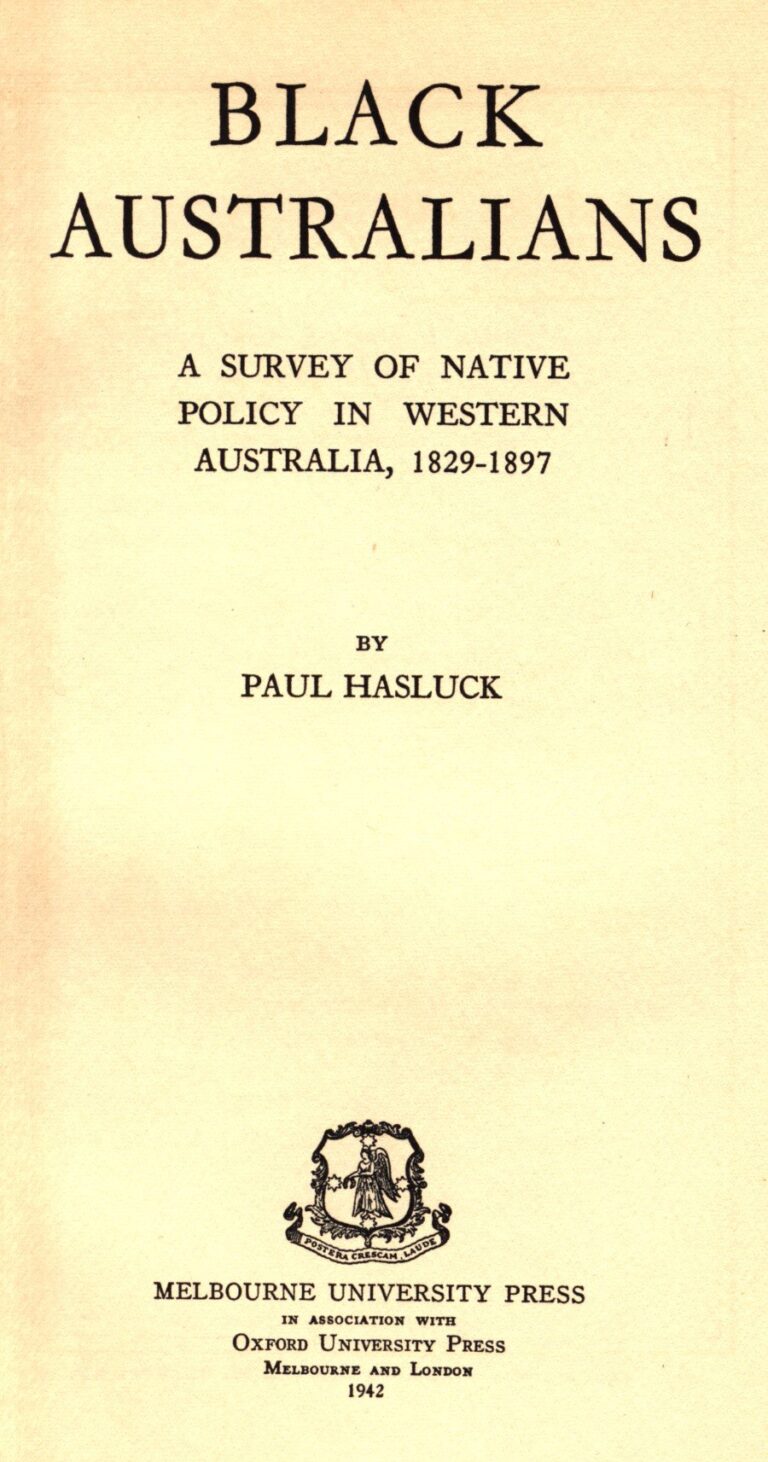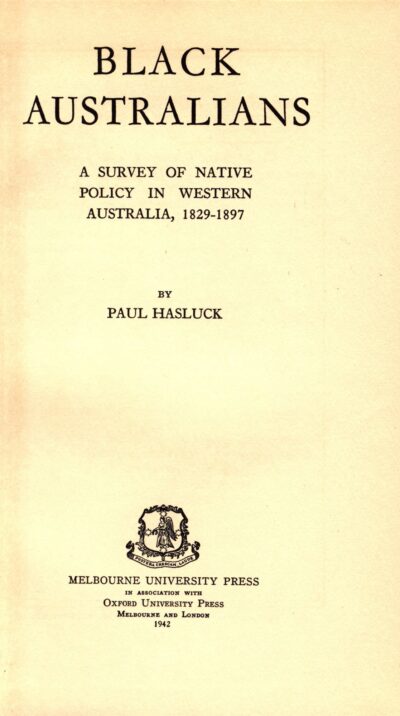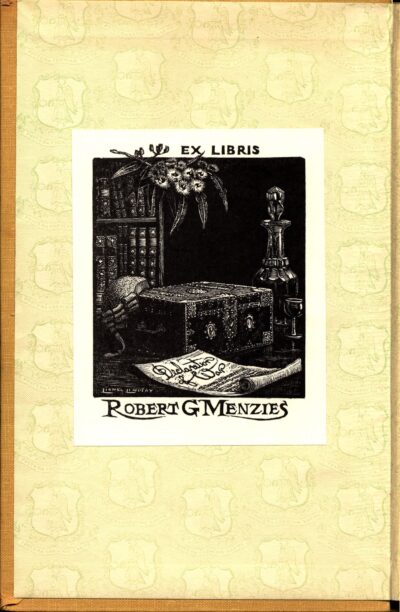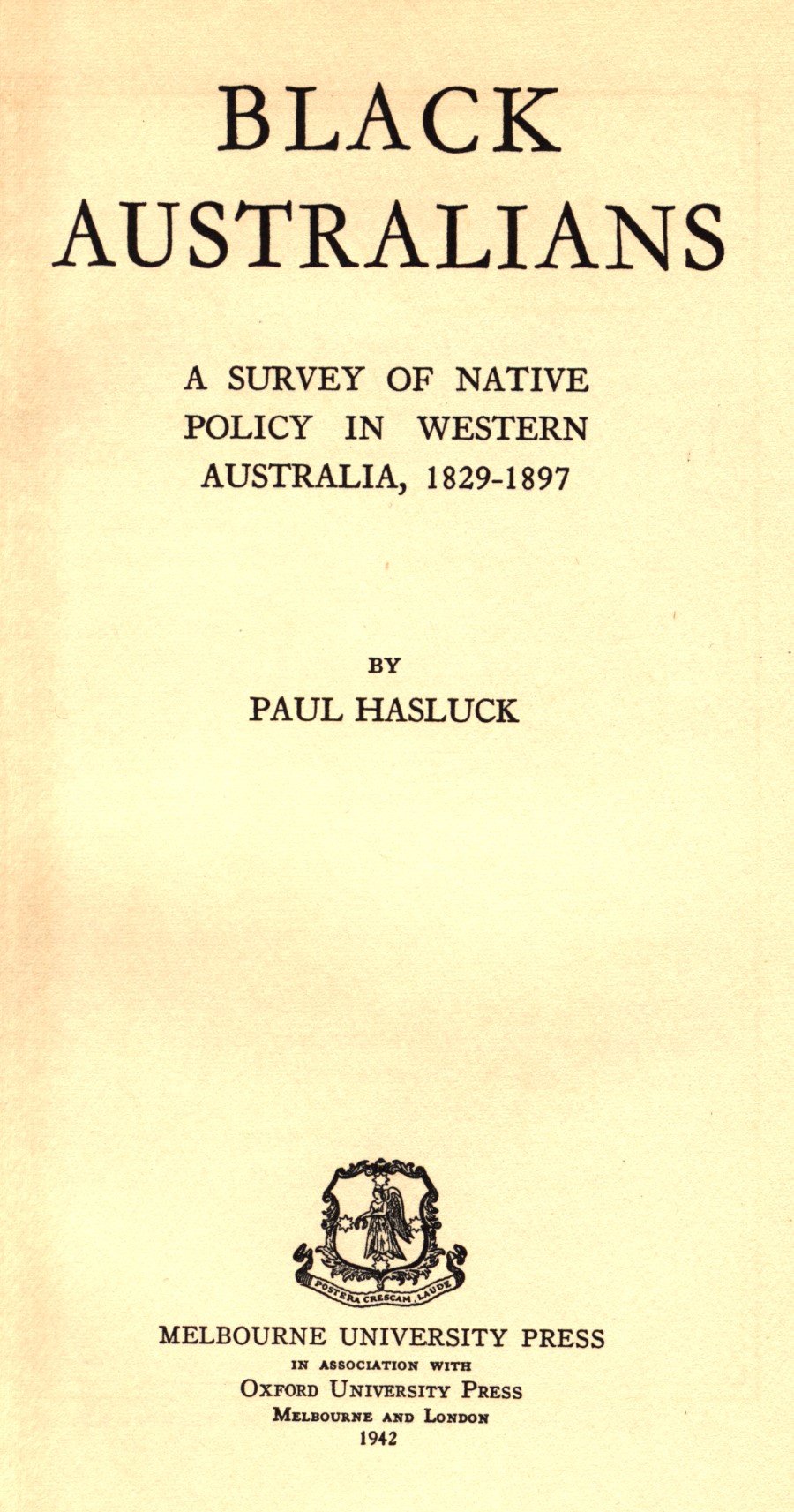Paul Hasluck, Black Australians: A Survey of Native Policy in Western Australia, 1829-1897 (1942)
Sir Paul Meernaa Hasluck was a long-standing minister in the Menzies Government who would go on to serve as Australia’s Governor General.
Born in Fremantle on 1 April 1905, Hasluck’s parents were both officers in the Salvation Army who ran a home for boys on a farm near the town of Collie. One of the workers on the property was a Noongar man known as ‘black Paddy’, who became an important influence on Hasluck whom he would frequently refer to for the rest of his life. Hasluck initially attended the single teacher primary school attached to the boys’ home, before winning a scholarship to attend the Perth Model School. In January 1923 he entered a cadetship with the West Australian, and he later studied journalism at the University of Western Australia. There he joined the university dramatic society, and served as the drama critic for the student magazine, the Pelican. Hasluck’s other passion was history, as he joined the Historical Society of Western Australia and conducted research into the State’s colonial era.
It was a combination of Hasluck’s personal history, journalistic inquiry and historical knowledge of the treatment of Indigenous Australians which made him take an interest in Indigenous affairs. He joined the Australian Aborigines Amelioration Association and wrote articles for the West Australian highlighting issues relating to Indigenous welfare. He joined the staff of the Mosely Royal Commission into the circumstances of Western Australia’s Aboriginal people, and travelled throughout the State interviewing pastoralists, missionaries, and Indigenous people. On the back of this firsthand research, Hasluck undertook a Masters thesis at the University of Western Australia, which would be published as the book Black Australians two years after it was initially completed.
The book argues that State policies of protective segregation had failed and should instead be replaced with ones founded on the principles of legal equality and citizenship rights, with special measures to raise the living standards of Indigenous people to match those of mainstream Australian society. It dismisses the then still prevalent myth that Indigenous Australians were a ‘dying race’ inevitably doomed to extinction, and instead lays the blame for Indigenous plight squarely on the actions of settlers and governments:
‘The limited measures taken for the protection of the native from violence, the prevention and treatment of diseases and the provision of means of subsistence for him when his primitive food-gathering was disturbed were inadequate to preserve his life; and they present too ugly a background for any white man to find complacency in the belief that it was inevitable that the natives should die out’
Even when whites had finally started to take notice of the suffering of Indigenous Australians, Hasluck was scathing of the paternalism of their approach:
‘It may seriously be asked whether a great deal of latter-day missionary and ameliorative effort among aborigines is not founded on pity, based on physical repugnance, rather than on a respect for the black man or a faith in his dignity as a human being’
The values of Black Australians reflected liberal beliefs in the importance of opportunity, individualism and independence, and they would form the blueprint for the extensive reforms Hasluck would conduct as Minister for Territories in the Menzies Government from 1951-1963. At the time, the Constitution barred the federal government from making laws targeted at Indigenous Australians, and since Indigenous policy was thus considered a State issue, it was only in the Northern Territory that the federal government had responsibility for it. Nevertheless, the Commonwealth could model reforms and put pressure on State governments to adopt them. Among Hasluck’s notable achievements were the 1953 Welfare Ordinance which removed racially based categories from territorial administration, greatly boosting funding for education for Indigenous Australians, and ensuring that Indigenous Australians would benefit from mining royalties via the Aboriginals Benefit Trust Account.
While Hasluck fought hard to achieve legal, educational and economic equality for Indigenous Australians, he has been criticised for upholding assimilationist views. However, those views must be viewed in context, as a deliberate move away from the apartheid-like segregation and neglect which the assimilation policy replaced. As Brad Underhill has argued ‘not only was Hasluck scathing of government neglect of Aboriginal health, his assimilation position in the 1930s was far more nuanced than some critics allow. He desired for Indigenous people to share the same opportunities, privileges, and responsibilities as other Australians. In his eyes, Aboriginal Australians could continue to cherish their cultural traditions, but within the bounds of a common and equal notion of Australian citizenship. In later life, Hasluck acknowledged that he had assumed Indigenous people would seek to be accepted into the mainstream culture, and that he may have undervalued the strong spiritual and cultural connection of customary land ties.’
You might also like...
Sign up to our newsletter
Sign up for our monthly newsletter to hear the latest news and receive information about upcoming events.





